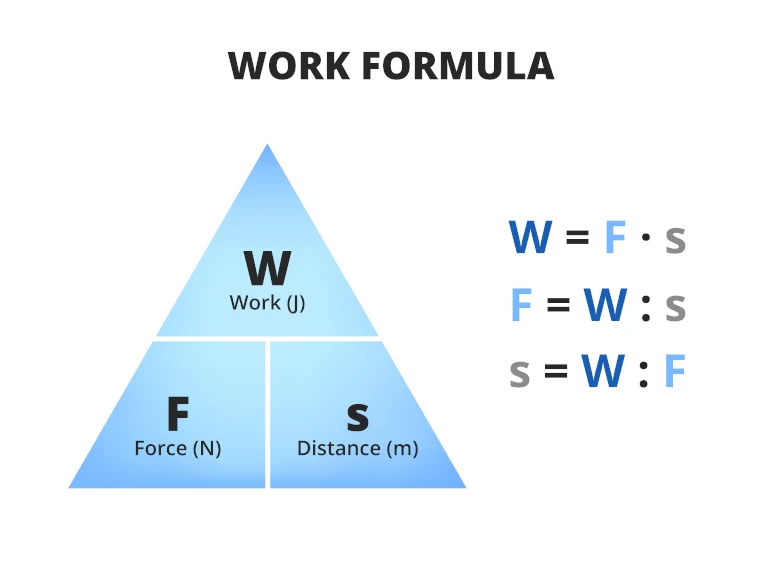Transfer Of Heat Energy And Its Effects
In this article, the following are the objectives that will be discussed.
- Understand what heat is.
- Using Particulate Nature of Matter to explain expansion and contraction.
- Describe the applications of expansion and contraction in our everyday life.
Heat
What is heat?

Image Credits: unsplash - cullansmith
Heat is a form of energy.
Temperature
Temperature is the degree of hotness or coldness of an object.
The SI unit for temperature is Kelvin (K).
There are other common units used for measuring temperature, such as degree Celsius (°C) and degree Fahrenheit (°F).
Measurement Of Temperature
A thermometer is used to measure temperature.

Image Credits: unsplash - weenail
Most thermometers use the units of degree Celsius (°C) and degree Fahrenheit (°F).
Different Types Of Thermometers
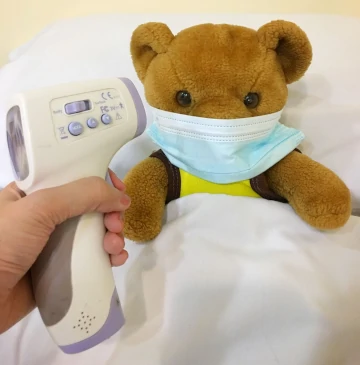
Image Credits: unsplash - kwook |
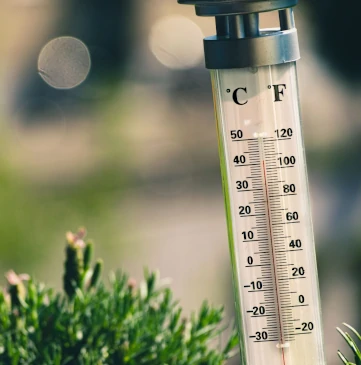
Image Credits: unsplash - sumekler |
The image on the left shows an infrared thermometer and the image on the right shows a liquid-in-glass thermometer.
How does heat travel?
Heat flows from a region of higher temperature to a region of lower temperature.

Image Credits: unsplash - clark_douglas
The ice cream melts on a hot, sunny day as heat flows from a region of higher temperature to a region of lower temperature. Therefore, the heat from the surrounding air passes quickly to the ice cream, raising the temperature of the ice cream, and causing it to melt.
Expansion And Contraction
When a substance is heated (gains heat), it undergoes expansion and its volume increases.
When a substance is cooled (loses heat), it undergoes contraction and its volume decreases.
Relating Expansion And Contraction To The Particulate Nature Of Matter
All matter consists of many tiny particles that are always in a constant and random motion.
The degree to which the particles move is determined by the amount of energy they have and their relationship to other particles.
Therefore, out of the three states of matter, which state expands the most when heated?

Gas expands the most when heated! Why is this so?
Particles of gas are spaced far apart from each other while particles of solid and liquid are closely packed together. Hence, as the particles of gas gain heat, they will have the most amount of space to allow for expansion to take place between the particles. Therefore, gas expands the most upon heating as compared to solid and liquid.
Similarly, gas contracts the most upon cooling as compared to solid and liquid.
Expansion And Contraction In Our Everyday Life
Here are some applications of expansion and contraction around us.
- In the old weather, telephone wires and electricity cables raised on poles will contract, causing them to become taut and even snap. Hence, these wires and cables are strung loosely from pole to pole, to allow for contraction to take place.

Image Credits: unsplash - artwall_hd
- On a hot day, railway tracks can bend and twist due to expansion taking place. Hence, expansion gaps are present in the tracks to provide space for the tracks to expand, preventing the tracks from damaging.
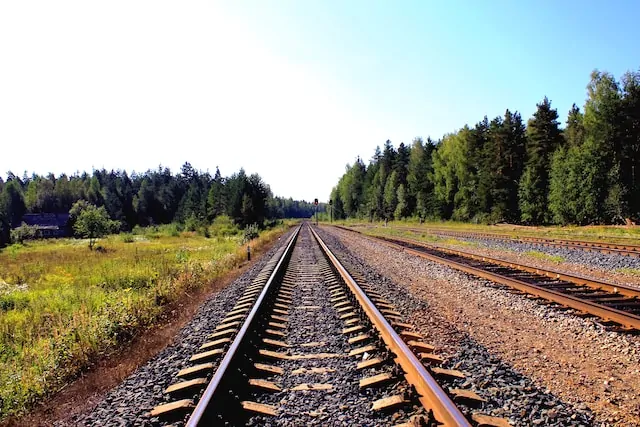
Image Credits: unsplash - kholodnitskiymaksim
Revision Questions
Here are some questions for us to look into on the objectives of this article.
Question 1:
Which of the following shows appropriate units for temperature?
- calvin, degree Celsius, and degree Fahrenheit
- kelvin, degree Celsius, and metre
- kelvin, degree Celsius, and degree Fahrenheit
- calvin, degree Celsius, and metre
Solution:
(C) kelvin, degree Celsius, and degree Fahrenheit
Question 2:
What is the SI unit for temperature?
- degree Heat
- degree Fahrenheit
- degree Celsius
- Kelvin
Solution:
(D) Kelvin
Question 3:
What instruments are used to measure temperature?
- digital thermometer, infrared thermometer
- water thermometer, ultraviolet thermometer
- infrared thermometer, water thermometer
- ultraviolet thermometer, infrared thermometer
Solution:
(A) digital thermometer, infrared thermometer
Question 4:
Which of the following correctly shows how heat travels?
- Heat travels from an object of a lower temperature to an object of a higher temperature.
- Heat travels from a glass of ice to the surroundings.
- Heat travels from the surroundings to the ice cream on a hot day.
- Heat travels from the ice cream to the surroundings on a hot day.
Solution:
(C) Heat travels from the surroundings to the ice cream on a hot day.
Explanation:
Heat flows from a region of higher temperature to a region of lower temperature.
On a hot day, since the surrounding air has a higher temperature as compared to the ice cream, heat travels from the surrounding air into the ice cream.
Question 5:
Which of the following will expand the most when heated to the same temperature?
- 50 g of carbon dioxide
- 100 g of steel
- 50 g of water
- 50 g of steel
Solution:
(A) 50 g of carbon dioxide
Explanation:
Carbon dioxide is a gas, while steel is a solid and water is a liquid.
As mentioned earlier, the particles of gas are spaced far apart from each other while particles of solid and liquid are closely packed together. Hence, when the particles of gas gain heat, they will have the most amount of space to allow for expansion to take place between the particles.
Question 6:
Which of the following will contract the most?
- oxygen gas placed in a 20°C room
- oxygen gas placed in an 8°C room
- a steel bar placed in a 20°C room
- a steel bar placed in an 8°C room
Solution:
(B) oxygen gas placed in an 8°C room
Explanation:
Oxygen is a gas while steel is a solid.
When a substance loses heat, it contracts. This occurs when the substance is placed in an environment of a lower temperature. Hence, the temperature of the room should be 8°C.
As the particles of gas are spaced far apart from each other while particles of solid are closely packed together, when the particles of gas lose heat, they will have the most amount of space to allow for contraction to take place between the particles.
Question 7:
Which of the following thermometers utilise expansion and contraction for the measurement of temperature?
- forehead infrared thermometer
- digital thermometer
- mercury thermometer
- in-ear infrared thermometer
Solution:
(C) mercury thermometer
Explanation:
As the mercury thermometer is placed in a hot solution, the mercury in the thermometer gains heat and expands. Hence, its volume increases, resulting in a rise in the reading on the thermometer.
As the mercury thermometer is placed in a cold solution, the mercury in the thermometer loses heat and contracts. Hence, its volume decreases, resulting in a drop to the reading on the thermometer.
| Continue Learning | |
|---|---|
| Chemical Changes | Energy And Work Done |
| Transfer Of Heat Energy And Its Effects | Interactions Within Ecosystems |
| Electrical Systems | Transport System In Living Things |
| Interactions Through The Application Of Forces | Human Sexual Reproductive System |
| Acids And Alkalis | |
Test Yourself
Which of the following is not a unit of temperature?
Newton is the unit of force.
Ans: (D) newton
A metallic rod is heated as shown below.
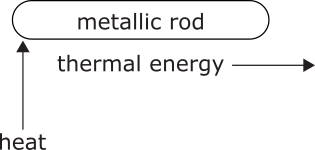
Determine the mode of heat transfer in the metallic rod.
Heat is transferred along the metallic rod by conduction.
Ans: (A) conduction
Which of the following statement is correct?
I. A metal expands when we heat it.
II. A metal contracts when we heat it.
III. A metal shrinks suddenly when we heat it.
IV. No change in size of the metal is observed when we heat it.
Solids expands when heated.
Ans: (I) A metal expands when we heat it.
Which of the following is not a good conductor of heat?
Non metals are poor conductors of heat.
Ans: (D) wood
In which of the following is convection the major mode of heat transfer?
Convection is the major mode of heat transfer in fluids i.e gases and liquids.
Ans: (D) water




 SG
SG  VN
VN 
